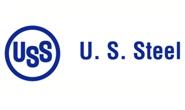Steel Mills

US Steel Safety Shortcuts Lead to Fatal Explosion
Written by Brett Linton
March 26, 2015
The following information is from the United States Department of Labor, Office of Public Affairs concerning an accident at US Steel Fairfield in September 2014. Steel Market Update spoke to the U.S. Department of Labor who told us that the press release was not unusually harsh and the Labor Department was going with “narrative releases” when deaths occurred as they did at USS Fairfield in September 2014. We will let the press release speak for itself.
US Steel Corp.’s safety shortcuts lead to fatal explosion
Time and cost concerns blamed in 2 worker deaths and serious burns to another
FAIRFIELD, Ala. – Like most of us, Leo Bridges and Edward Bryant left for work one day in September 2014, probably thinking about some rest and relaxation when the shift ended. Like many, they figured their managers and employer would ensure they were safe at work. Bridges and Bryant were wrong; they were caught in a fiery explosion in the Flux Building, which U.S. Department of Labor Occupational Safety and Health Administration inspectors said occurred because U.S. Steel Corp. put workers at risk, so as not to slow production at its Fairfield facility.
The three men were opening and closing a malfunctioning valve on a furnace at the Fairfield Works when it erupted, and sent Bridges, Bryant and a third co-worker to the hospital. Bridges, 61, and Bryant, 53, died later due to their injuries. The third man was rushed to a burn trauma unit in critical condition. Fairfield Works is comprised of both steelmaking and finishing facilities. The company has headquarters in Pittsburgh and employs more than 40,000 workers.
OSHA inspectors determined that the explosion was caused by opening and closing a high-pressure valve that contained oxygen and hydrated lime. The men were doing the work while the furnace was operating, as directed by the department’s management.
“Management knew that attempting to operate the valve while the furnace was still running placed workers at risk, yet they allowed them to do it because they didn’t want the production line down for hours,” said Ramona Morris, OSHA’s area director in Birmingham. “This employer chose productivity over the safety of its workers, and two people died as a result of this decision.”
OSHA issued the employer a willful citation for not developing and using a procedure to control the hazardous energy to allow workers to operate the valves on the furnace while it is in operation. A willful violation is one committed with intentional, knowing or voluntary disregard for the law’s requirement, or with plain indifference to worker safety and health.
Seven serious citations were issued for not developing a procedure to prevent the furnace from releasing hazardous energy while workers performed maintenance; missing exit signs; an improperly installed exit gate; and not training workers to recognize hazardous conditions with the oxygen system. A serious violation occurs when there is substantial probability that death or serious physical harm could result from a hazard about which the employer knew or should have known.
The remained of this release as well as more information regarding inspections and citations that can be viewed here.
US Steel issued the following statement in response to the Occupational Safety and Health Administration (OSHA) citations:
“U. S. Steel has received and is reviewing the citations issued by the Occupational Safety and Health Administration (OSHA) following its investigation of the September 21, 2014 incident at our Fairfield Works in Birmingham, Ala., which resulted in the deaths of two of our employees and the injury of another. We remain deeply saddened by the loss of our friends and colleagues, and continue to express our sincerest sympathies to their families.
“U. S. Steel has a long-standing commitment to the safety and health of the men and women who work for our company. Safety is a primary core value and something we take very seriously. We have worked cooperatively with OSHA and the United Steelworkers throughout the investigation and will continue to work with them going forward.”

Brett Linton
Read more from Brett LintonLatest in Steel Mills

CRU: Tata Steel looks to shed 1,600 jobs in the Netherlands
The company said, “The challenging demand conditions in Europe driven by geopolitical developments, trade and supply chain disruptions and escalating energy costs have affected the operating costs and financial performance."

Reports: Federal funding for Cliffs’ project could be slashed
Elon Musk's DOGE is determining which Department of Energy grants to advance and which ones to terminate, according to several media outlets

Trump still against selling USS to Japanese firm: Report
Despite ordering a new review of Nippon Steel’s bid for U.S. Steel, President Trump said he is still against selling USS to a Japanese company, according to media reports.

Algoma looks to sell more steel in Canada in wake of Trump’s tariffs
The Canadian steelmaker said its absorbing higher tariffs as it moves forward.

Ancora abandons plan to take over leadership of USS
Investment firm Ancora Holdings Group has halted its play for U.S. Steel's board, citing Nippon Steel’s proposed bid for USS “gaining momentum.”
